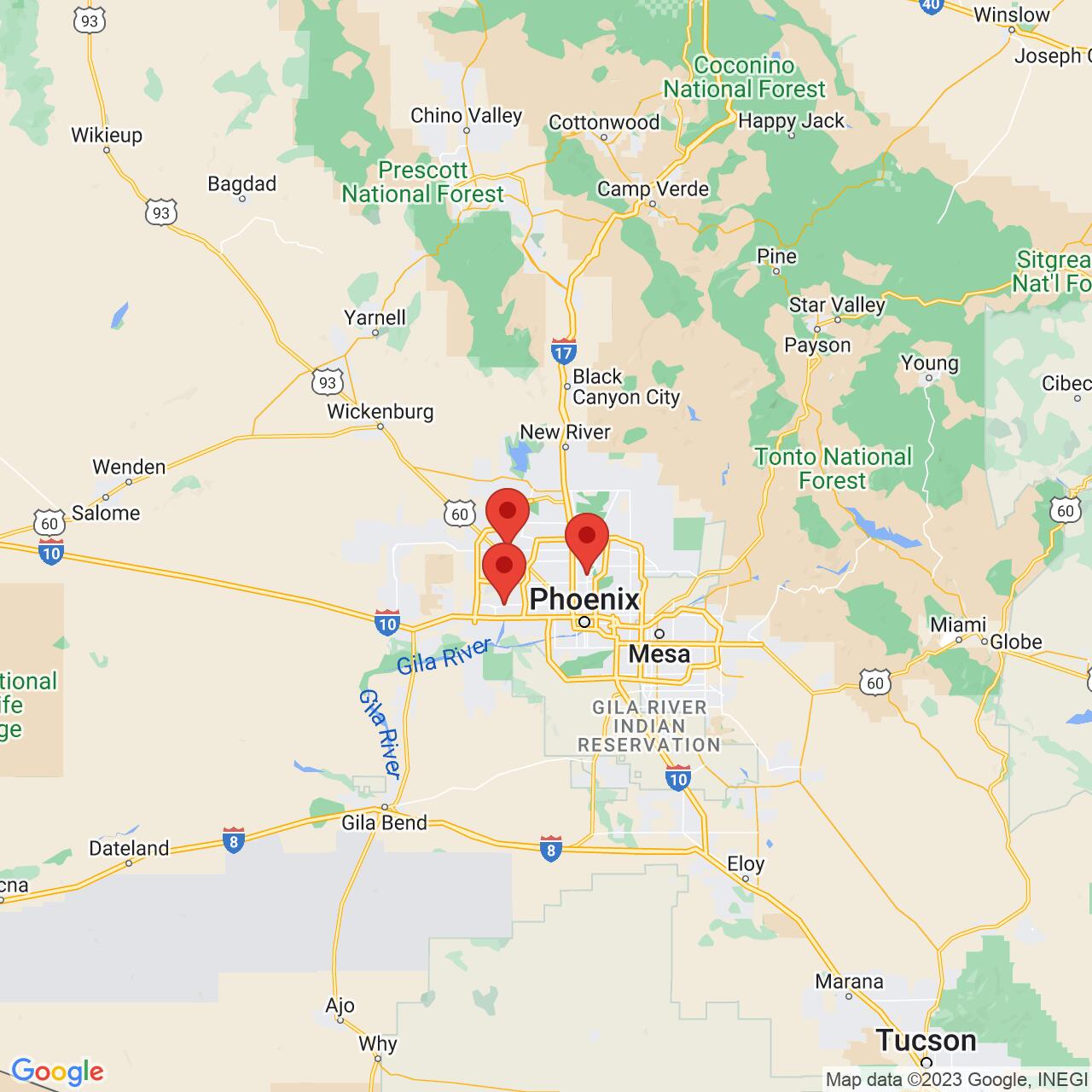
Being in a car accident can be devastating. It can leave you with property damage, a range of physical injuries, and even emotional trauma. In instances when the accident was wholly someone else’s fault, filing a personal injury claim seems straightforward, but what if you were partly to blame?
Arizona comparative negligence laws allow you to file a claim and get compensation even if your actions contributed to the accident. Gerber Injury Law’s car accident lawyers share more on what you need to know about comparative negligence.
What Is Comparative Negligence, and How Does It Differ From Contributory Negligence?
Throughout the country, there are two main doctrines on how parties can recover damages after being in a car accident: comparative negligence and contributory negligence.
With comparative negligence, you can still recover damages if you were partly at fault. Your damages, however, are reduced by your percentage of fault. Arizona follows this doctrine.
Contributory negligence, on the other hand, bars those who caused the accident, even partly, from getting compensation.
Introduction to Arizona’s Pure Comparative Negligence Laws
Under Arizona’s pure comparative negligence laws, any injured party can receive compensation even if they were partly at fault. Any monetary damages you recover are then reduced by the percentage of fault you had in the accident.
Something to keep in mind is that Arizona does block anyone who intentionally contributed to or caused the injury or death from getting any compensation.
Key Differences Between Modified and Pure Comparative Negligence
The main difference between modified and pure comparative negligence refers to the percentage of fault the plaintiff can have and still get compensation.
Under pure comparative negligence laws, even if you are 99% at fault for the accident, you can still receive compensation. In this case, you’d collect 1% of the damages. Arizona follows this law.
Under modified comparative negligence laws, you become ineligible to ask for compensation if you are 50% or more at fault.
Understanding Fault
Determining fault in car accidents is complex. It requires gathering evidence, including police reports, eyewitness statements, and expert witness statements. Sometimes, traffic cameras can offer help. Insurance companies and lawyers rely on all of these to understand who is at fault.
It’s important to understand the various common scenarios that lead to accidents and what might influence who’s considered at fault.
Rear-end collisions tend to be the fault of the driver in the rear because they may not have left enough room between their car and the one in front. Many things can come into play, however, including distracted driving by both or either party, so finding who’s at fault requires looking through the evidence.
Head-on collisions can be deadly, and they often occur because of a driver’s error. The fault usually lies in the vehicle that departed the lane or entered wrong-way traffic — but not always.
For example, consider a vehicle that gets rear-ended at an intersection and pushed into oncoming traffic. They may cause a head-on accident, but the driver at fault is the one who caused the rear-end collision.
Left-turn collisions are also common. In these kinds of accidents, the cars turning left are the ones that have to yield the right-of-way unless they have a green arrow.
This means that the vehicles turning left tend to be the ones most at fault. There are exceptions, however. If the driver of the straight-moving car was speeding, they could be at fault.
Generally, if someone breaks the law, the majority of the fault goes to them, but with all of the countless circumstances in which accidents can occur, having a lawyer to represent you gives you a better chance of getting fair compensation.
The Role of Insurance Companies in Assigning Fault
Insurance companies have to carefully analyze the evidence gathered from the accident. The company will assign an insurance adjuster to investigate the case.
To make their decision, insurers will rely on police reports, eyewitness statements, and even accident reconstruction specialists. They can also turn to photos and traffic cameras for help.
They’ll speak to you and the other drivers involved, as well.
It’s crucial to remember that they will also check your social media to make certain any injuries you’re claiming are real. Insurers will use all of the evidence to understand the sequence of events that led to the accident.
In many instances, however, insurance companies don’t accurately assign fault, and that could mean that you’re not able to get the compensation you deserve. If that’s the case, turning to a car accident lawyer is essential.
Impact of Fault Percentage
The percentage of fault that the insurer assigns is highly significant because it impacts the percentage of damages you receive. Because Arizona is a pure comparative negligence state, you don’t have to worry about crossing the 50% fault threshold, as you would in other states.
To help maximize the compensation you receive, even if you were partly at fault, you want to document everything. No matter how minor the medical treatment you get or how inexpensive the medications you have to take as a result of the accident, keep a record.
You also want to write down all of the added expenses you’ve had because of the accident, as well as any wages you may have lost. If you’re having nightmares or dealing with trauma, start keeping a journal so that you can provide a record of the pain and suffering you’ve been dealing with.
It’s also crucial that you don’t accept the first offer. Insurance companies are not your friends. Many times, they can delay the process so that you get tired and accept a low offer. Don’t let them manipulate you.
Perhaps the best thing you can do to maximize your compensation is to hire an attorney with experience in these kinds of accidents. They will be able to present your claim in the best way possible.
Specific Situations
To help you get a better sense of comparative negligence laws in Arizona, there are a few important situations to consider.
An example that shows how complex it can be to assign fault is if you’re driving and you become distracted by a text. At the same time, a vehicle pulls out in front of you. You don’t react in time and end up hitting the vehicle.
In this instance, you and the other driver could share liability. Although you were distracted, the other car was negligent because they didn’t yield according to right-of-way laws.
Most people assume that drunk drivers are always 100% at fault in all accidents they cause, but that’s not the case. For example, if a drunk driver is swerving on the road, they can lead another car to swerve into a lane to avoid hitting them. When that second car swerves, it causes a collision.
In that instance, both drivers are at fault. The highest percentage of fault, however, goes to the drunk driver.
Aggressive driving, including rapid lane switching and speeding, sometimes involves just one driver, but often, it involves multiple parties. In those instances, all parties can hold a percentage of the blame.
Something else that can be tricky is an accident involving an uninsured or underinsured driver. In Arizona, even uninsured drivers can get compensation.
In all of these instances, you want to turn to a personal injury lawyer to help you.
Legal Process and Resources
To file a claim that involves comparative negligence, you have to prove that the other party was at least partly to blame so that you can claim some compensation. This requires gathering evidence.
You will also have to negotiate with the other party’s insurance company. Remember that having as much evidence as possible will strengthen your case. Additionally, remember that you want to avoid accepting the first offer they make.
To help prove to insurers that you were not wholly at fault, especially if they’re threatening not to pay at all, turn to car accident attorneys. They know what your rights are. Experienced lawyers can get the insurance companies to deal with you fairly.
As you begin the process of filing a claim, you can turn to some legal resources for help. The Arizona Judicial Branch has a site that offers information on filing claims and lawsuits in the state. You can learn all about the statute of limitations in these accidents and much more. The State Bar of Arizona offers resources, as well.
Depending on Experienced Car Accident Lawyers
In a car accident in which you were partly at fault, it’s essential that you rely on an experienced car accident lawyer. Because Arizona allows you to get compensation in relation to the percentage of fault you bear for the accident, you need to have a lawyer who can fight to maximize your compensation.
At Gerber Injury Law, we have decades of experience helping people who’ve been through accidents that were at least partly someone else’s fault. We have the dedication necessary to fight for your rights.
Contact Gerber Injury Law today to get a free consultation and start the process of filing a claim.


